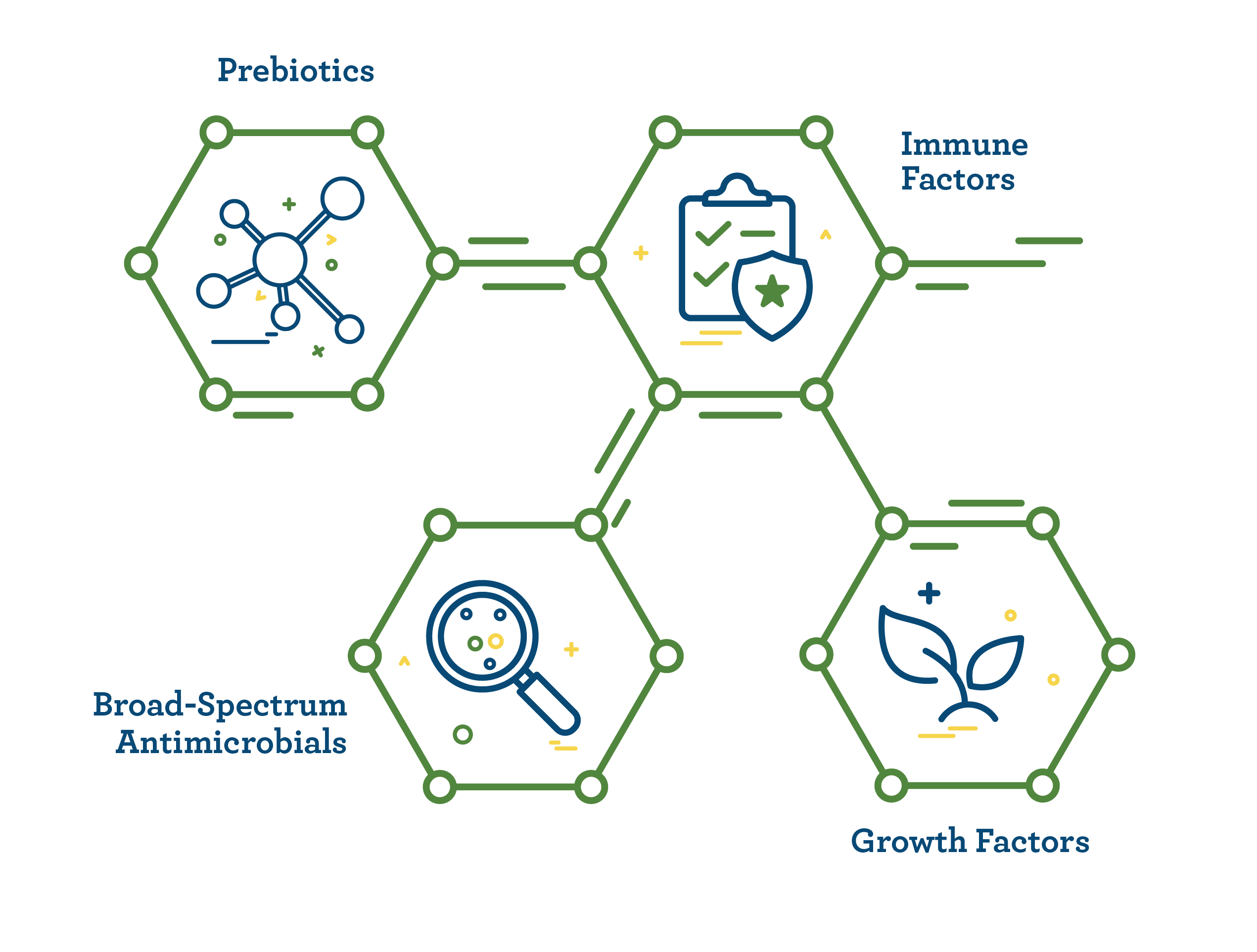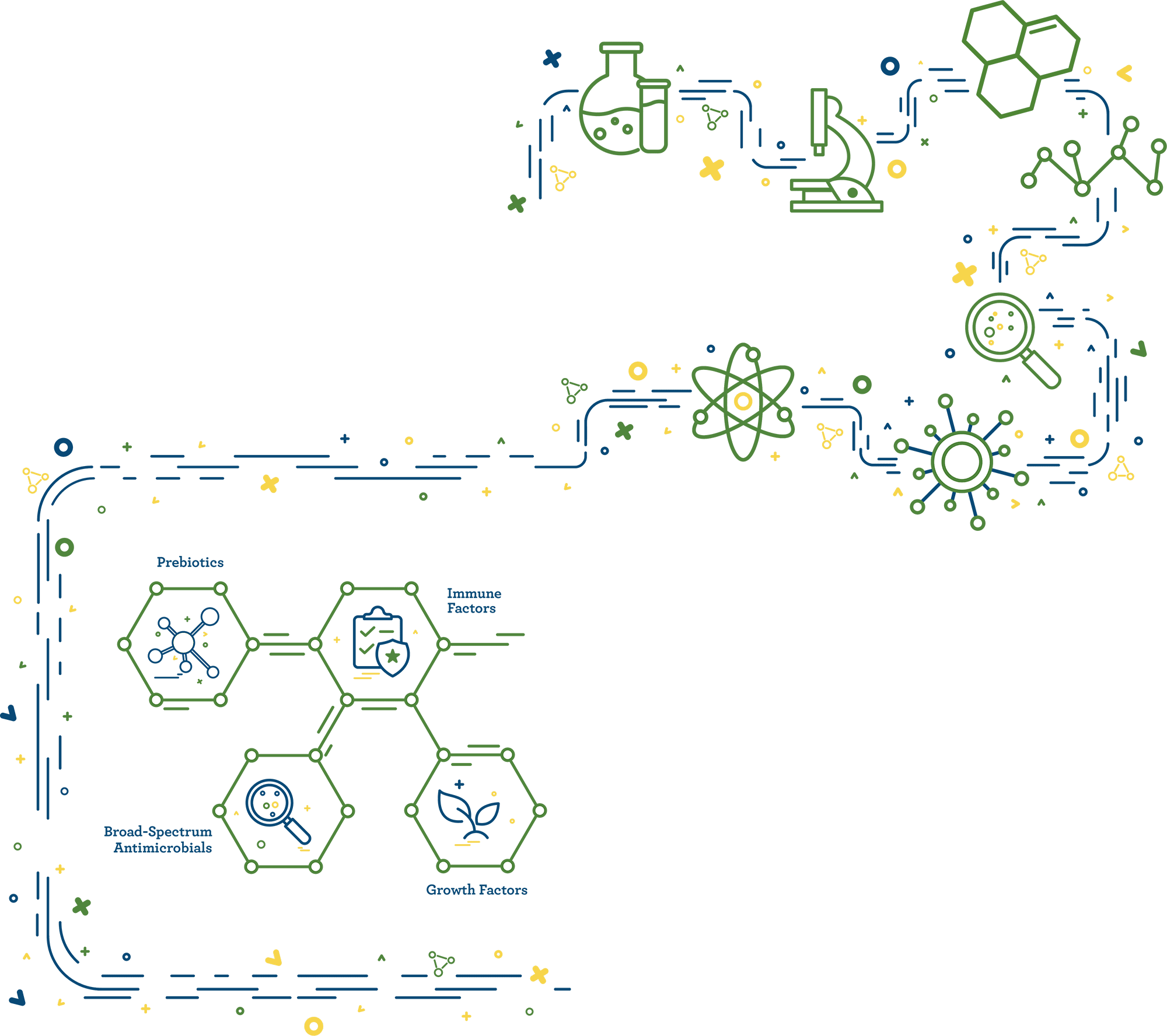
Components of Colostrum
Cow colostrum and human colostrum are highly similar in their makeup; both contain protective proteins, growth and immune factors, and prebiotics. Because they share so many of the same components, the way they work in the human body is also highly similar. Colostrum from cows contains a variety of components that make it a multi-benefit powerhouse.

Lactoferrin
- Has antiviral and antimicrobial effects
- Shown to inhibit the growth of specific microbes
- Plays an important role in the activation of immune responses
- May have an anti-inflammatory effect
Lysozyme
- Helps to support immune function by attacking specific bacteria and fungi
- Helps break down cell walls of potentially harmful bacteria
Lactoperoxidase
- A major antibacterial enzyme whose primary function is to defend against microbial infection
Immunoglobulins
- Naturally target a range of human pathogens, including Rotavirus, Shigella, Escherichia Coli, Salmonella, and other viral and bacterial pathogens and parasites
Cytokines
- Important mediators in the regulation of immune and inflammatory responses
- Play a key role in regulating intestinal inflammation and gut lining repair
Insulin-like Growth Factors
- Important mediators of cell growth, development, and differentiation
Epidermal Growth Factor
- Plays an important role in the regulation of cell growth, proliferation, and differentiation
- Helps stimulate the repair process at the site of inflammation
- Plays an important role in preventing bacteria moving throughout the gut and stimulating gut immunity
- May aid in the recovery of traumatized gastric and intestinal tissues
Transforming Growth Factor Alpha (TGF-ɑ)
- Helps stimulate gastrointestinal growth and repair
Transforming Growth Factor Beta (TGF-ꞵ)
- Plays an important role in regulation of the immune system
- During injury or disease, it acts in concert with EGF to stimulate cell proliferation
- Both TGF-ɑ and TGF-ꞵ are helpful in the repair and integrity of the lining of the gastrointestinal tract
Oligosaccharides
- Oligosaccharides act as a prebiotic — they are neither digested nor absorbed in the upper intestinal tract of humans, but are delivered intact into the colon where they can act as nutrients for beneficial bacteria
- Specific oligosaccharides support the growth of beneficial bacteria and modulate the microbiome
- Oligosaccharides and glycoconjugates in milk can compete with potentially harmful bacteria and viruses

Sourcing of Colostrum
Colostrum is produced in large quantities by mother cows, far exceeding the needs of a calf. Once the calf receives all the colostrum it needs, the rest can be collected for human use. While collection methods can differ from company to company, there are some best practices you should look for. First and foremost, look for companies that put the health of the calf first and collect only after the calf has received all of the colostrum it needs to thrive. You should also look for companies that support the health and well-being of the cows where they get their colostrum – cows that live on USDA, Grade A certified dairies are best.
Colostrum is also best when it is collected on the first day of milking, once the calf has received everything they need. After the first day, the components in colostrum start to become less and less potent, meaning it will be less and less beneficial for your health.
